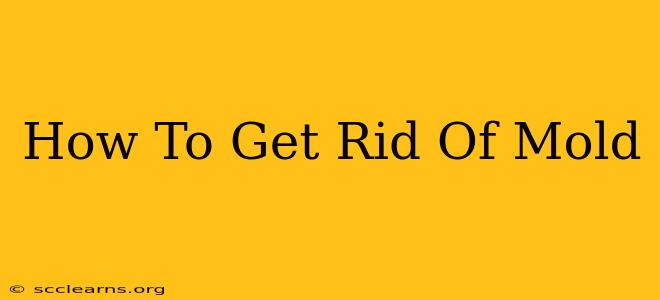Mold. Just the word conjures up images of damp basements and musty smells. But mold is more than just unpleasant; it can be a serious health hazard, causing allergic reactions, respiratory problems, and even more severe illnesses. This comprehensive guide will walk you through how to effectively get rid of mold, from identifying the source to preventing future growth.
Identifying Mold: The First Step to Removal
Before you start scrubbing, you need to identify the mold. Knowing the type and extent of the infestation is crucial for choosing the right removal method.
Common Mold Characteristics:
- Appearance: Mold comes in various colors, from black and green to white and gray. It often appears as fuzzy patches or slimy spots.
- Location: Mold thrives in damp, humid environments. Look for it in areas with poor ventilation, such as bathrooms, basements, and around leaky pipes or windows.
- Smell: A musty, earthy odor is a strong indicator of mold presence, even if you can't see it visibly.
Important Note: If you suspect a large or widespread mold infestation, especially in areas like walls or ceilings, do not attempt DIY removal. Contact a professional mold remediation specialist. They have the expertise and equipment to safely and effectively address the problem.
How to Remove Mold: DIY Solutions for Small Infestations
For small, contained mold problems (less than 10 square feet), you can often tackle removal yourself. Always wear protective gear, including gloves, a mask (an N95 respirator is recommended), and eye protection.
Cleaning Supplies You'll Need:
- Cleaning solution: A mixture of water and detergent (like dish soap) is often sufficient. For tougher mold, you might need a solution of bleach and water (follow manufacturer instructions carefully – never mix bleach with ammonia!). Consider using a commercial mold cleaner for more stubborn infestations.
- Scrubbing brush: Choose a brush with stiff bristles to effectively remove the mold.
- Spray bottle: This will help you apply the cleaning solution evenly.
- Paper towels or rags: These are essential for wiping away the mold and cleaning solution.
- Vacuum cleaner with a HEPA filter: This will help remove mold spores from the air after cleaning.
Step-by-Step Mold Removal Process:
- Ventilation: Open windows and doors to improve ventilation. This helps reduce mold spore dispersal and prevents you from inhaling them.
- Protection: Put on your protective gear. This is crucial to protect yourself from mold spores.
- Cleaning: Spray the affected area with your cleaning solution, allowing it to sit for a few minutes to penetrate the mold. Then, scrub vigorously with your brush to remove the mold.
- Wiping: Use clean paper towels or rags to wipe away the mold and cleaning solution.
- Drying: Ensure the area is completely dry. Use a fan or dehumidifier to aid the drying process. Mold needs moisture to thrive, so thorough drying is crucial.
- Disposal: Properly dispose of contaminated cleaning materials and rags in sealed plastic bags.
Preventing Future Mold Growth: Proactive Measures
Once you've removed the mold, it's important to take steps to prevent it from returning.
Key Prevention Strategies:
- Reduce Moisture: Fix any leaks promptly. Use exhaust fans in bathrooms and kitchens. Ensure proper ventilation in all areas.
- Control Humidity: Use a dehumidifier to keep humidity levels below 50%.
- Regular Cleaning: Regularly clean areas prone to mold growth.
- Proper Maintenance: Maintain gutters and downspouts to prevent water from accumulating near your foundation.
Remember: Prevention is always better than cure when it comes to mold. By addressing moisture issues and maintaining a clean, dry environment, you can significantly reduce the risk of future mold infestations.
When to Call a Professional
As mentioned earlier, always contact a professional mold remediation specialist for large infestations or if you're unsure how to handle the problem safely. Professionals have the expertise and equipment to deal with extensive mold problems effectively and prevent potential health risks. They can also identify the root cause of the mold problem and offer solutions to prevent future issues.
This guide provides valuable information on how to get rid of mold. By following these steps and taking proactive measures, you can create a healthier and safer home environment. Remember that safety is paramount – prioritize your health and don't hesitate to seek professional help when necessary.

